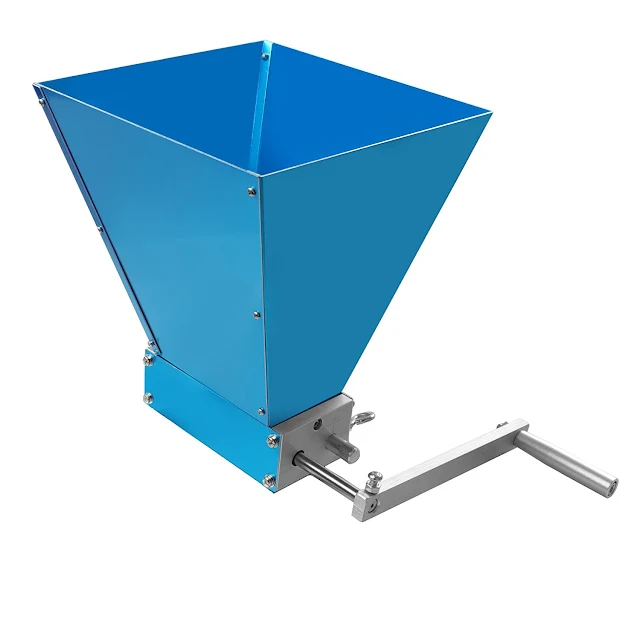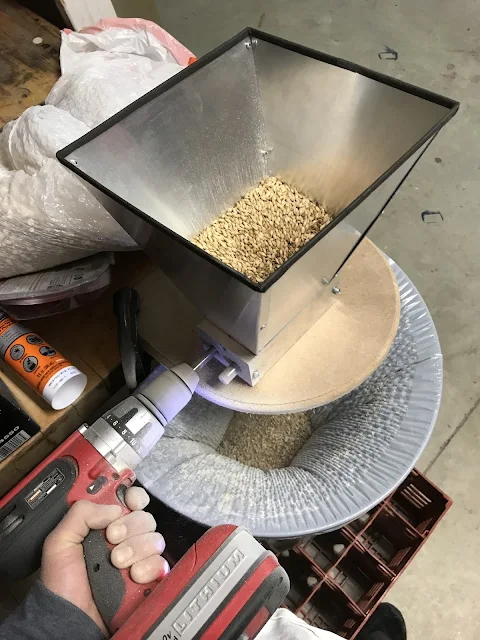Have you ever heard the expression, “that’s grist for the mill” It comes from grain being the grist taken to a mill.
In modern use, grist means anything useful for a purpose.
Consider this your grist, a clear run through the best grist mills for homebrewing so you can crush well and brew better.
Why you should mill your own grain
- Freshness, you crack husks just before mash, which preserves aroma and enzyme power.
- Control, you set the gap to fit your system and hit reliable efficiency.
- Cost, unmilled grain is often cheaper in bulk, long term savings add up.

Buyer questions to answer first
- Volume, can the mill handle the batch sizes you plan to brew?
- Adjustability, can you set the gap so kernels crack cleanly and husks stay mostly intact?
- Upgrade path, can you motorize later, swap hoppers, or change rollers
- Mounting, do you have a base, a board, or a bench, and hardware to fix it safely?
- Budget and durability, will the unit last for years of brew days?
Compare these top rated units directly:
| Model | Rollers | Hopper | Gap range | Drive | Best for |
|---|---|---|---|---|---|
| Barley Crusher | 2 | 7 lb | .015 to .070 in | Crank or 3/8 drill | Reliable all round home use |
| Kegco KM11GM-3R | 2 | Large aluminum | to .070 in | Crank or drill | Sturdy, easy motorizing |
| Ferroday 2-roller | 2 | Steel, compact | Adjustable | Crank or drill | Budget friendly durability |
The Barley Crusher

The Malt Mill ‘Barly Crusher’ is Northern Brewer’s popular choice.
Clean, durable, and the hopper holds about 7 pounds of grain which suits most home batches.
Features
- Solid base fits a standard 6.5 gallon fermenting bucket
- Adjustable rollers from .015 to .070 inch
- Materials for long life, 1018 cold rolled steel rollers, 6061 aluminum body and hopper, tool steel axles with oil impregnated bronze bushings
- 5 inch rollers with 12 TPI knurl pull grain cleanly while preserving husks
- Throughput of about 6 pounds per minute with a 3/8 drill at 500 RPM
Genuine Amazon reviewer notes
- “This mill pounds through grain like a champ.”
- “Efficiency boost to roughly 81 percent from the mid sixties.”
- “I run grain twice and the husks stay beautifully unbroken.”
- “Very fast, great for improving mash efficiency.”
Kegco KM7GM-2R Grain Mill

The Kegco KM7GM-2R Grain Mill is a sturdy unit with an aluminum hopper that holds up to 7 pounds.
- Alloy block frame with two steel rollers on stainless ball bearings
- Drive shaft and axles integral to the rollers, you can drive clockwise or counterclockwise
- Hand crank included, easy to motorize with a drill, no extra parts required
- Stainless knurled knobs allow a gap spacing adjustment up to about .070 inch
- Designed to crack grain, not produce flour
Adjustment is simple, loosen the screws, set the gap, tighten. You will supply or build a base that fits over a grain bin or 5 gallon bucket.
Ferroday Stainless 2-roller Homebrew Grinder

The Ferroday is a no nonsense stainless mill. Rollers are 5 inches long and 1.25 inches in diameter, the crank shaft is 3/8 inch. The gap is adjustable so you can tune the crush for your system. The unit weighs about 6.6 pounds.
How to set your crush for efficiency and runoff
A good crush cracks the endosperm so enzymes can reach starch, yet keeps husks mostly intact to form a filter bed during sparge. Too fine leads to stuck sparges, too coarse leaves unconverted starch and low efficiency.
Start near .038 to .045 inch on two roller mills, then fine tune by lauter speed and gravity.
Where to mill and how to keep it tidy
Most brewers mill outside over a large bucket. Grain dust can fly when you pour. A lid with a cutout for the rollers helps. If you buy pre milled grain, delay purchase until close to brew day to preserve flavor.
If you are buying unmilled, consider tools like a wort chiller or a better mash tun as next upgrades.
Coarse or fine
Open the gap enough to crack husks, not shred them. Run a handful, inspect the grist. Husks should be mostly whole, endosperm broken into a few pieces. Too much flour raises risk of a stuck sparge.
If flow slows badly, open the gap slightly or add rice hulls.
I got no mill, now what?
You can crack with a rolling pin.
Place grain in a towel on a board and roll until kernels split. It is slow. A food processor can work in short pulses, but avoid turning malt into dust.
For regular brewing, a purpose built mill is the better choice.
KitchenAid attachment, can it work
The electric KitchenAid mixer is common in home kitchens. A separate grain mill attachment exists, it is designed for flour. Brewers report mixed results, small hopper and awkward collection angles. If you try it, set a coarse grind so the malt is barely cracked. It performs better with the 600 watt Kitchen Aid mixer than the 325 watt model.

How to motorize with a drill
Clamp the mill to a solid bench, chuck a 3/8 inch drill to the drive shaft, and run at low to moderate speed for a steady crush. Charge your battery first if cordless.

Troubleshooting and tips
- Stuck sparge, open the gap slightly, stir gently, add rice hulls, slow the runoff.
- Low efficiency, tighten the gap a little, verify mash temperature, stir well, extend mash by 10 minutes.
- Dusty grist, reduce speed, widen gap a touch, check roller knurl for wear.
- Inconsistent crush, keep feed steady, avoid rapid on off drill pulses, ensure hopper is not bridging.
Related gear you might want
Looking to round out your toolkit Try a quality pH Meter or the best burner for brewing.
Worried about grain pests ?Read tips on keeping weevils from beer grain.
Need cleaning power, here is a recipe for making your own PBW cleaner.
And yes, Kegco also make a handy 5 gallon keg.